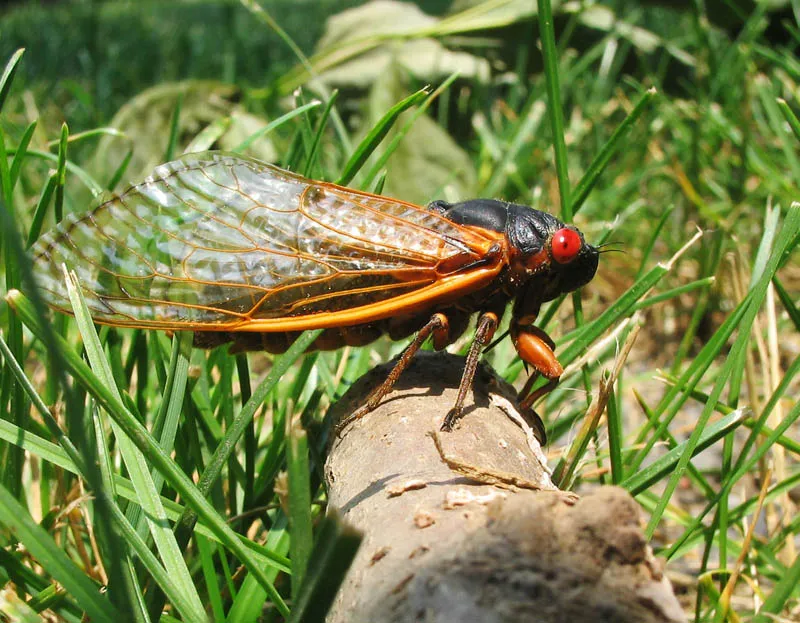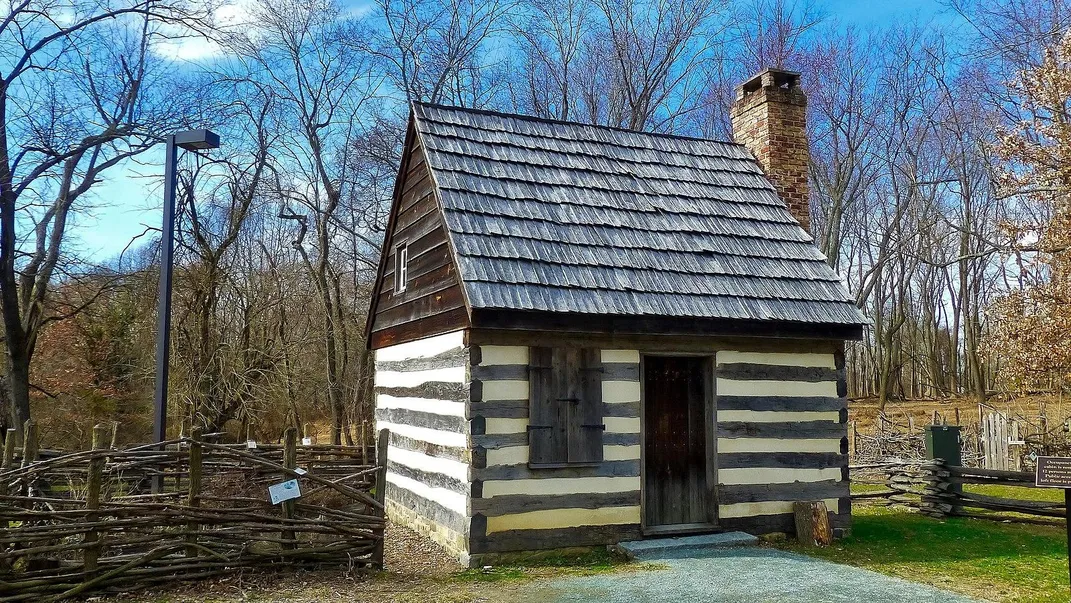Meet Benjamin Banneker, the Black Scientist Who Documented Brood X Cicadas in the Late 1700s
A prominent intellectual and naturalist, the Maryland native wrote extensively on natural phenomena and anti-slavery causes
:focal(2344x2659:2345x2660)/https://tf-cmsv2-smithsonianmag-media.s3.amazonaws.com/filer/e9/8e/e98ed7df-4eaa-4419-ab7a-6afc3c467ef6/benjamin_banneker_statue_at_the_national_museum_of_african_american_history_and_culture.jpeg)
This summer, billions of red-eyed, black-winged cicadas will swarm the eastern United States for the first time in 17 years. As the insects known as Brood X emerge from their mysterious underground retreat, they’re sure to put on an astonishing—and noisy—show, molting, mating and dying all in a manner of weeks.
Nearly 272 years ago, in 1749, a young Benjamin Banneker (1731–1806) witnessed a different crowd of cicadas throng and “sing” on his 100-acre Maryland homestead. An astronomer, almanac author, polymath and free Black man, Banneker watched the cicadas carefully, writing down observations about the strange insects whenever they reappeared. He would go on to track the bug’s life cycle and accurately predict the brood’s return in 1800.
In doing so, notes historian Cassandra Good on Twitter, Banneker may have become one of the first scientists to observe and chart the cicada’s bizarre 17-year life cycle. But as researchers—and married couple—Asamoah Nkwanta and Janet E. Barber argued in the Journal of Humanistic Mathematics in 2014, Banneker rarely receives credit for this remarkable scientific find.
Speaking with Billy Jean Louis of the Baltimore Sun, Nkwanta says Banneker’s identity as a Black man has “absolutely” played a role in this oversight.
“[W]e have a long way to go with correcting U.S. history in a sense [of] getting the correct history out there so we all [can] be well-informed of the past,” the scholar tells the Sun.
Born in 1731 to Mary, a free woman of mixed racial heritage, and Robert Bannaky, a formerly enslaved Black man, Banneker grew up on his parents’ homestead near Baltimore, according to the Benjamin Banneker Historical Park and Museum. (Spellings of his family surname varied over his lifetime; the one used here is generally accepted as the most common.)
A voracious learner, Banneker was tutored in reading and writing by his grandmother, an Irish-born former indentured servant. He later continued his education at a one-room Quaker schoolhouse alongside Black and white peers, writes Louis Keene for the White House Historical Association’s Slavery in the President’s Neighborhood initiative.
In his 20s, Banneker hand-carved a wooden clock that kept precise time, cementing his status as local celebrity renowned for his mechanical skill and intellect. Per the Library of Congress, he went on to study astronomy and accurately predict a 1789 solar eclipse. Opting not to marry or have children, the talented polymath made his living publishing popular almanacs replete with sophisticated astronomical predictions. He also participated in a survey project that outlined the future Federal Territory of Washington, D.C.
Nkwanta and Barber argue that Banneker achieved remarkable success as an intellectual, particularly given the societal constraints placed on Black men in the antebellum U.S. His observations on cicadas were likewise ahead of their time. In early 1800, the naturalist reflected on what he called “locusts” in his Astronomical Journal, which is housed in the Maryland Center for History and Culture’s collection. (As Alex Fox reports for Smithsonian magazine, early Americans commonly mislabeled the insects as locusts.)
“The first great Locust year that I can Remember was 1749,” Banneker recalled. “I was then about Seventeen years of age when thousands of them came and was creeping up the trees and bushes, I then imagined they came to eat and destroy the fruit of the Earth, and would occasion a famine in the land. I therefore began to kill and destroy them, but soon saw that my labor was in vain, therefore gave over my pretension.”
He went on to describe the cicada events of 1766 and 1783, which he also witnessed, and venture a suggestion that “their periodical return is Seventeen years, but they, like the Comets, make but a short stay with us.” Banneker then (accurately) predicted that the cicadas would once again return that very same year.

Few written records of Banneker’s life remain, in part because a fire burned down his house just days after his funeral in 1806. But key pieces of his writing have endured the test of time: In 1791, for instance, Banneker included a handwritten advance copy of his almanac in an impassioned letter to then-Secretary of State to Thomas Jefferson.
Arguing in defense of the intellectual capacities of Black people, the naturalist decried the institution of slavery and pointed out Jefferson’s own hypocrisy as someone who both penned the Declaration of Independence and enslaved people. Banneker went on to note the irony “that you should at the Same time be found guilty of that most criminal act, which you professedly detested in others, with respect to yourselves.” (Jefferson is estimated to have enslaved more than 600 people during his lifetime.)
Per the National Archives, Jefferson had publicly speculated that Black people were intellectually inferior to white people. In writing this letter, Banneker became the “the first and only [Black] man to challenge [Jefferson’s] suspicion directly during his lifetime.” Jefferson eventually responded with a short but polite note; their correspondence was published in a variety of forms by anti-slavery advocates.
The late Silvio A. Bedini, historian emeritus of the Smithsonian Institution, published one of the first scholarly biographies of Banneker in 1972. Banneker has since been memorialized with a statue that stands in the Smithsonian’s National Museum of African American History and Culture, as well as a 1943 mural at the District of Columbia’s Recorder of Deeds Building.
Individuals interested in exploring the homestead where Banneker grew up can visit the Benjamin Banneker Historical Park and Museum, which opened in 1998. (Researchers discovered the remains of his razed house in the 1980s.) Visitors can view the reconstructed family residence, as well as an apiary and orchard just like the ones where cicadas swarmed when Banneker was alive to observe and write about them.
/https://tf-cmsv2-smithsonianmag-media.s3.amazonaws.com/accounts/headshot/nora.png)

/https://tf-cmsv2-smithsonianmag-media.s3.amazonaws.com/filer/ce/ff/ceff3b23-abcc-4f27-aece-65423bae64a2/screen_shot_2021-05-07_at_52324_pm.png)
/https://tf-cmsv2-smithsonianmag-media.s3.amazonaws.com/accounts/headshot/nora.png)